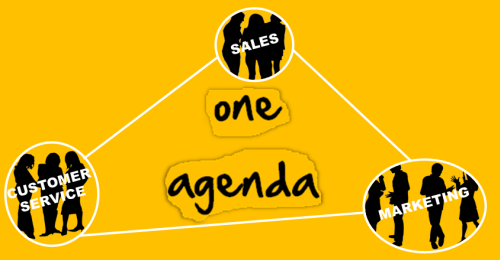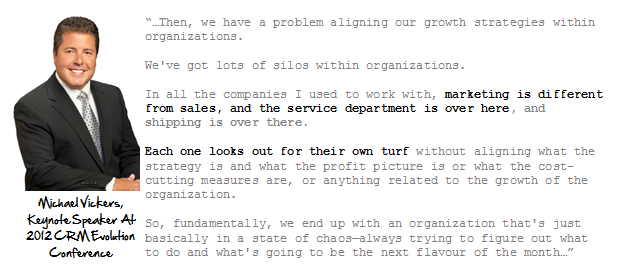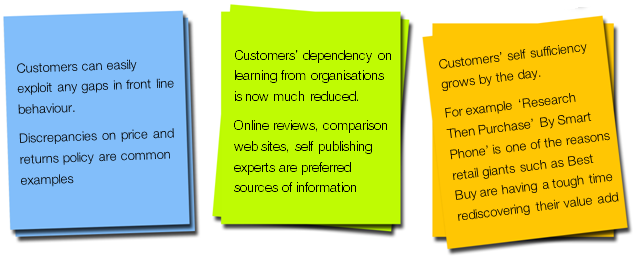

Social Business is a big idea. It is one of the things that tell us we’ve really left the 20th century behind.
It is also proving profoundly political as it transformationally reshuffles who gets a voice and position at the table.
It’s worth recalling that the act of ‘reading’ remained punishable by death for many decades after the printing press initially democratised access to knowledge and new ideas. We should expect similar reactionary forces this time around.
Just look how punitive digital downloads has made the music industry overlords. Many more winners and losers are yet to emerge from this disruption. In truth the race to the top of this new leader board has only just begun.
Ready For A Bumpy Ride?
All this signals we are embarking on a 10-20 year cycle of tectonic realignment and redrawn boundaries. That’s all fine and dandy from the perspective of watching history unfold. But how can this bigger picture be reduced to the more immediate concerns of the business community?
Happily one of the characteristics of this particular revolution is that there is an ongoing stream of great commentary to help us understand what is happening. For instance…
- Brian Solis on the State Of Social Marketing is thorough and insightful. Typical of his prolific output
- Dion Hinchcliffe is a great story teller with a unique way of visualising these tectonic shifts. This is his ballad on the lonesome highway that the lost tribe (aka CIOs & IT) now increasingly tread
- Another favourite of mine is the collective output of the Altimeter Group whose policy of sharing their research has enriched many minds as a result. Here is a piece about the Dynamic Customer Journey with links to places where the conversation has also been encouraged to take root
- Then there are one off pieces of research that keep tabs on any gap between aspiration and current capability. MITSloan is one of the heavy hitters that invest in finding out. Social Business: What Are Companies Really Doing? is a good example
Finally much can be learnt from conference agendas. After all they need to be well researched promotions to persuade busy people to attend them. This one is from Enterprise 2.0 and offers a neat summary of all the hot themes.
If you then try and mash all of this up, an overall storyline comes into focus. One that is imperiously grand, and currently dwarfs the efforts of even the mightiest to master. At this stage of the game, it is therefore the gaps that provide most clues on progress.
For instance although 65% of Fortune 500 brands are reported as active on Social Networks, only 5% of their CEOs have learnt/been brave enough to tweet. Customers think this is a missed opportunity. The research to explain this is here.
Here is another. Although a majority of brands attempt to engage with customers via Facebook and Twitter, 70% of customer complaints on social channels remain unanswered. The research is here.
What do these snapshots tell us?
The Value Of Milestones
The reason I’m writing this is because I believe we are in need of breaking this transformation down even further. To make it real for people. To make it more attainable. For instance, if you are someone from a front line function, what’s the ‘local’ vision within this greater transformation? That’s what I’m exploring here.
Let’s start with some home truths and areas that need fixing.
Sales, Marketing and Service are major organisational touch points for customers. It is obvious that the level and quality of customer experience is largely determined through their actions. Yet most organisations still allow these competencies to operate in silos. This makes them blind to opportunity and ignorant of their combined impact.
Ever since Siebel popularised the notion of blending Sales, Marketing and Service on one software platform, the market has been simultaneously intrigued and disappointed. That was a decade ago. Since then everyone has learnt to remind themselves that the platform is the least of it as far as success is concerned. Nonetheless Paul Greenberg and his cohort of SCRM luminaries do a great job every year hosting CRM Idol as a way to ‘coach’ the CRM vendors to greater things.
But does a better platform make for a better level of coordinated action between front line functions? Maybe. I confess to being impressed by some the current cloud deployments going on. But that is still in early adopter phase.
This is the real litmus test. Is that old anecdote of Marketing pushing out campaigns that drop at peak traffic times for the Call Centre still true? You tell me! And is the Mexican standoff between Sales and Marketing as to who is right about the definition of a qualified lead now dead and buried? I hear not.
Or in Esteban slang “just sayin”
Current Reports Suggest ‘Must Try Harder’
If you are a small organisation or a very tightly integrated one, then the walls between Sales, Marketing and Service probably remain semi permeable. Thus the necessary co-operation amongst those teams is readily facilitated.
However as a rule of thumb, the larger an organisation gets, the more it relies on organisation structure to scale.
With that approach comes the seeding and generation of petty kingdoms. And before long, the sense of belonging to a company is only what’s printed on a business card.
Instead, the individual’s experience is of pledging allegiance first to function, then to brand. Because that’s where the dynamics of personal careers are played out.
I came across this insight from Michael Vickers who was being interviewed over at destinationCRM.com about the biggest challenges facing business. This was his second point.
 If you want further proof, ask the head hunters. What do they look for in a Salesperson, a Marketer or a great Customer Service person? They know candidates for these roles are quite different in competencies, aspiration and values. And certainly dress code!
If you want further proof, ask the head hunters. What do they look for in a Salesperson, a Marketer or a great Customer Service person? They know candidates for these roles are quite different in competencies, aspiration and values. And certainly dress code!
It is no exaggeration to say there are different tribes in each of the main customer facing functions. And tribes suggest unique cultures. Layered on top of this natural instinct to see things differently and prioritise accordingly, are the carrot and stick of siloed organisational targets and incentives. “As you goal them, so they behave”.
Add all this together and it is no surprise that ‘alignment’, a sense of ‘being on the same team’, a ‘readiness to collaborate’ are not front of mind intentions within these functions. Even when their diplomatic representatives meet at executive level, it is often like national ministers mingling badly at an EU session.
Conclusion? Unless you are blessed with pre-existing tendencies for front line collaboration, you probably need new tactics to catalyse a smarter level of customer engagement between these functions.
Why One Agenda?
Before that though, let’s just check this discussion is going in the right direction. Some might say it begs a question of relevance.
“Does any of this even matter?”
“Why try to rub out natural dividing lines?”
“Just let Sales, Marketing and Service continue as they have for the last half century.”
“What’s so broken that merits yet more disruption?”
The simple answer is the new politics of socially connected, mobile customers. They have moved on. Here are a few examples of the changed balance of power.
In short, organisations are scrambling to catch up and learn how to matter once again.
Of course, the speed with which these macro behavioural changes flow into individual market sectors depends. The expert consensus though is that it looks destined to affect all sectors in a remarkably short space of time. Remember B2B is just as affected by the ‘informed customer’ syndrome as consumer markets.
Here are two recent insights from different research authorities that pinpoint the urgent need for change in how organisations plan to engage and interact with their customers.
Let’s start looking at how traditional Customer Service is being impacted.
According to an October 2011 survey of 7,638 U.S. consumers aged 18 to 88 called ‘Understanding Customer Service Satisfaction to Inform Your 2012 E-business Strategy,” Forrester discovered that:
That figure still averaged 27% for the overall population.
Moreover my own client sources tell me this self sufficiency is translating into a 10-20% call deflection benefit for the Customer Service organisation. Incidentally this offers an interesting choice. How could that spare capacity be used? Reduce operating costs. Or re-invest in higher value customer engagement?
Let’s move onto a Marketing insight. Here we can see how the issue of trust has become central to the way in which brands must think about where they place their promotional spend.
According to Nielsen’s “Global Trust in Advertising & Brand Messages” report (Q3 2011), which surveyed more than 28,000 Internet respondents in 56 countries,
An increase of 18% since 2007.
Unsurprisingly, trust in online reviews comes in at 70%. Whereas trust in traditional TV and print advertising languishes in the mid forties by comparison. This is another stunning example of how rapidly customers have weaned themselves off brand information as credible sources of product information.
The final piece of evidence is more anecdotal but just as telling. It concerns the future role of sales organisations. John Ragsdale’s well regarded blog ‘Eye On Service’, keeps close tabs on changes in the Help desk/technical support industry. As an ex Forrester top analyst, he knows what to be looking out for as signs of market change.
He recently interviewed Christine Crandell of New Business Strategies who had just delivered a webinar titled “Buyer 3.0: The Buyer’s Journey. Her experience was that
 Christine’s comment raises an interesting question. What is the new role of the sales team? Clearly not the same as before.
Christine’s comment raises an interesting question. What is the new role of the sales team? Clearly not the same as before.
Incidentally she also mentioned that “Today’s buyers are putting as much emphasis on the buying experience as they are the product features”.
So what can we learn from all this? We have just reviewed three insights, each impacting a customer facing function at a transformational level.
As customers have changed, so too have the demands on front line functions. Increasingly customers are proving themselves able to complete pre and post purchase tasks without their help. Can we continue to work in silos with all the inherent inefficiencies and blind spots this creates?
The medium to long term answer has to be no.
So a new mission emerges. To provide a much more closely orchestrated level of valued engagement so that the customer will rediscover reasons to choose one brand over another.
But what does closer orchestration actually imply? Maybe an end to separate functions, replaced by a single Customer department? That certainly would be radical!
In the fullness of time something like that might come into existence in some form or another. Think about all the current experimentation with internal collaboration that the ‘social enterprise’ model is encouraging.
But most organisations understandably prefer evolution over revolution. And this is where the notion of One Agenda comes in. It is a milestone. Someway down the line of convergence. It is rooted in a simple observation.
 This transformation tactic also has the virtue of being an easy idea to get across and get busy with.
This transformation tactic also has the virtue of being an easy idea to get across and get busy with.
Items For Your Own One Agenda
Assuming you buy the logic that got us to this point, here are some suggestions to get your own version of One Agenda up and running.
These are not initially assumed to be substitutes for existing functional plans. That level of co-operation would probably take at least twelve months to reach in most SMEs and possibly twice as long in enterprise sized organisations.
Instead this is all about giant sized baby steps.
1. Develop A Common View Of Customers
Each function is likely to have their preferred way of categorising customers. For instance, how do marketing segments fit with sale funnel categories? These are two very different ways of describing the same customer for different purposes. Can they be linked in any meaningful way?
Getting teams to recognise this is point one. Then it’s a question of pooling creativity and coming up with a common way to recognise different customer categories such as:
This sets the scene for Sales, Marketing and Service to start sharing intelligence and collaborate in how to respond to these customer profiles more effectively.
Another point well worth discussing is how customer experience is mapped and tracked by each function. Sometimes the customer journey or life cycle will have been defined: maybe by key moments of truth. Assuming they exist, they typically start and finish at functional boundaries.
So what would happen if all versions were pooled and turned into a single, commonly understood version? Or a cross functional team came together and identified a full customer lifecycle version?
Suddenly we have a language that can be shared between teams with descriptions of the overall customer state that everyone can trained to use and collaborate on.
Surely that’s got to be a ‘good’ thing?
2. Do Joint Business Planning
One of the root causes of disconnects between front line functions is the business planning process. Budgets and targets are typically handed down centrally. Yet commentary is then written to support their realisation in isolation.
This can result in absurdities. Marketing achieves lead generation targets while the Sales team fall short of theirs. Equally Customer Service can suffer the consequences of over inflated marketing messages and over promising sales people. We know the stories.
So here is a simple set of suggestions to augment the annual planning process.
Certainly the description provided earlier about the new type of customer behaviour suggests that the whole way in which brands spend their resources to engage needs a radical rethink. Annual planning is a perfect time to start that.
Once done, it might then make sense to generate joint dashboards that give some form of common insight into the state of the customer experience. NPS has been very successful in becoming a universally understood metric. Are others also needed?
Beyond dashboards, let’s think about other ways to shake things up.
What about inviting ‘outsiders’ into functional progress meetings and brainstorm sessions! These habit forming ‘get togethers’ always run the risk on staying within tramlines and working from set agendas. Everyone from the same culture is self limiting.
Fresh eyes from another customer facing department should bring fresh thinking and thus innovation. Expand the agendas, think more broadly. Learn about the practical issues facing others customer teams.
Best way to understand another culture is to visit!
3. Merge Customer Analytics
This is a slightly tougher assignment than the previous two in so far that analytic solutions are scoped by outside vendors. But just being aware of the issue and sharing each other’s outputs can go a long way to generating a set of common insights and action points.
For instance, pooling Marketing and Sales analytics should produce a better view of what does and does not work in terms of finding and winning customers.
Equally speech analytics, usually owned by the call centre, could be compared with social analytics, usually owned by Marketing. Having this in action it’s fascinating to see how customer behaviour aligns or changes across different channels.
But more importantly they potentially all feed into a Voice of the Customer (VoC) initiative. And experts such Bruce Temkin show that while collecting feedback is fine, payback only happens when there is follow up. A VoC phase that remains weak.
The contribution that a ‘One Agenda’ approach makes to this shortfall is that jointly owned and resourced improvement plans are always more likely to succeed when universally backed.
In Conclusion
One Agenda is a challenging but achievable milestone in a much larger journey towards what some call the ‘Social Enterprise’/ ‘Social Business’. This in itself is a wheel within a larger societal wheel.
As far as business is concerned, the implications thus far are simply this. Customers have never been smarter. Nor have they been so well equipped to influence brand equity through individual or collective action. Organisations that insist on concrete walls between the teams that do business with such customers are exposed and vulnerable. Together they stand a chance.
As in all revolutions. United we stand. Divided we fall.
So start the journey towards your One Agenda milestone today with your first giant baby step. What will that be?










Hi Martin,
Great post. Insightful and thoughtful as always.
I agree with the One Agenda push. My question is based on your simple observation ‘The best way to get different tribes to work together is unify their focus under a common agenda’. Whilst I agree with the observation, getting different ‘tribes’ or other parties together whether in business, politics or other issues including issues involving violent struggles there has to be two things present I think:
1. Intent, will and understanding of all parties of the need to get together; and
2. An arbitrator that brings everyone together to referee and help thrash out a mutually agreeable outcome.
Is that the CEOs job?
Adrian
Adrian,
Thanks for commenting. Yes It’s someone with clout. Could be COO or within the silos if there is sufficient existing intent as you mention. But facilitation will be needed without a doubt
Martin